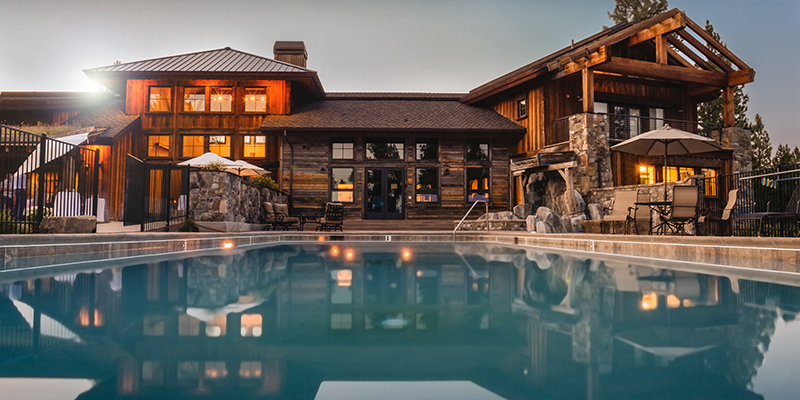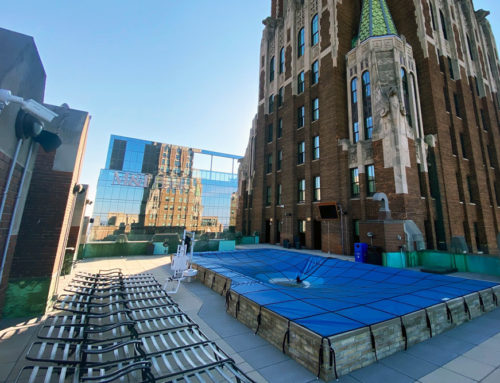
Nobody wants a green pool — unless you’re referring to energy efficiency. If that’s the case, then you’re reading the right blog! Reducing energy usage has become a big focus for the industry, but that doesn’t mean you need an extra arm and leg to make it affordable. Here are some simple ways for your pool to save more energy and keep your electric bill under control.
Cover It Up
Here’s a simple solution for starters: don’t let the water out.
When water evaporates, it transfers heat with it, and away from your pool. But some pool covers can help insulate your pool and retain the water’s heat when it’s not in use. Aside from your electric or gas bill, a pool cover can also help you save the amount of make-up water by 30–50%.
With so many options on the market, it’s tough to make the right choice on your own. But don’t worry — we’ve got some tips for you:
- A solar pool cover is usually the least expensive option. It looks like a large piece of bubble wrap that traps the sun’s heat and organically heats the water.
- If you need to shut your pool down during the cold winter months, consider a winter pool cover. They block UV rays from inducing evaporation, and also keep dead leaves and debris out of the pool.
- Automatic pool covers deliver the best of all features, albeit at a higher price tag. With the push of a button, these covers save you time and hassle, while blocking out UV rays. It also serves as a strong safety barrier against accidental drownings.
Switch to LED Lighting
The future really is looking brighter (see what we did there?) A 75-watt LED light can output as much light as a 500-watt incandescent fixture. LEDs also have the added benefit of increased visibility and safety.
Making the switch to LED lighting is as simple as replacing your old, incandescent bulbs with new LEDs. While incandescent lights might be a cheaper buy, LEDs will save your electric bill up to 85% over its lifetime. You can also program some LED lights to alternate colors, a bright idea (pun intended) to add some flair to your evening pool parties.
Switch to a Variable-Speed Pool Pump
You may already know that a pool pump can be the largest factor determining your energy efficiency. But you might not be aware that a variable-speed pool pump could reduce your original utility bill by 40–75%.
Pool pump size matters, but bigger doesn’t always mean better. You’ll want the smallest variable-speed pump possible for the size of your pool, but it needs to handle all conditions your pool may experience throughout a season. A pool professional that understands flow dynamics will size the pump and set the speed on an ideal program.
Update Your Pool Heating System
There are plenty of pool heating options to fit your budget, climate, and duration of pool use. It’s always best to discuss any changes with your pool professional, and have them install a new heating system for you.
Gas Heaters
Gas heaters may be an older heating strategy, but they’ve gotten a lot better since the old days. Gas heaters can be fueled by natural gas or propane.
Newer gas heaters offer 80–95% thermal efficiency compared to their older, 50% efficient counterparts. These more efficient models should save energy costs between $100 and $500 per year. With good chemistry and regular maintenance, they should last for about 7–10 years.
Solar Heaters
If the sun’s out year-round where you live, this is a no-brainer. Solar is the most reliable, efficient way to heat your pool with renewable energy.
Solar collectors heat circulated water, which is then redistributed back to the pool. They’re typically mounted on a roof, so your pool pump needs enough power to fight gravity and circulate water.
The obvious plus to solar heaters is that they use free energy, so — in theory — you save 100% of your pool heating electric costs. They also last for years with proper maintenance, so they’re worth the initial investment.
It’s not all fun in the sun. Solar heaters cost the most of all popular options. They’re also completely dependent upon the amount of solar radiation in your location. This isn’t usually a problem, but direct, unmitigated access to sunlight is a must. When in doubt, talk it out with the professionals to determine whether solar heat is your best option.
Heat Pumps
A heat pump may also be a good option if your initial budget is somewhere between a gas heater and solar heater. Unlike gas and solar heaters, heat pumps don’t generate heat, but capture it from the air and transfer it to the water. They usually cost more than gas heaters on install, but last longer and offer more utility savings than gas and traditional electric element heaters.
Heat pumps work best when the air temperature remains above 45°F. This should be fine as long as your pool is used only in warmer months, or if it’s used year-round in warmer climates.
Bring the Heat Down a Degree (or Two)
While we’re on the subject, it never hurts to talk about how water temperature plays a factor in all this. Most pool temperatures range between 78° and 82°F, and every degree matters. For every additional degree you choose to heat your pool, you can expect to pay about 10–30% more.
Changing your pool’s temperature is a choice with three factors:
- How much the sun directly heats your pool
- Which heating system you use
- Your pool guests’ preference
If you’re looking to cut back on energy costs while preserving your pool’s integrity, feel free to contact us and let’s schedule a consultation together.





